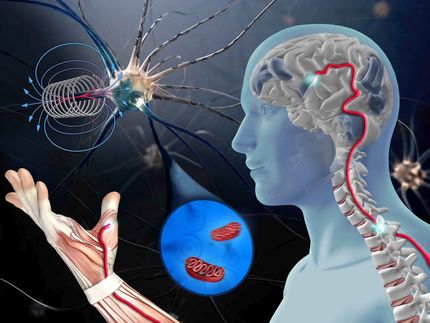Between ALS and cancer: perhaps a link in a protein
Advertisement
Senataxin, a protein involved in two major hereditary neurodegenerative diseases, including a form of ALS, is now back in the spotlight for its novel role as guardian of genome stability, revealing an interesting parallel between tumours and neurodegenerative diseases. The study, conducted jointly in the laboratories at IFOM, the FIRC Institute of Molecular Oncology in Milan, and at the National Research Council’s Institute of Molecular Genetics in Pavia, under the leadership of Giordano Liberi, is published in Cell.
It is mutated in two rare inherited neurodegenerative diseases, a juvenile form of amyotrophic lateral sclerosis (ALS4) and a rare ataxia with eye muscle defects (AOA2). The protein is senataxin, which has led to the discovery of an important new function that places it at the delicate crossroads between the processes of DNA replication and transcription.
"What clearly emerges from our results - explains Giordano Liberi, author of the research - is that senataxin acts like a police officer directing "traffic" during the replication of particularly "busy" DNA regions." Some regions of the DNA, where highly expressed genes are located, are constantly occupied by transcription complexes. "When DNA is duplicated, the replication fork must to pass through these highly transcribed areas and this is where senataxin intervenes - continues Liberi - avoiding the inevitable collision between the fork and the transcription complex. Just like a traffic officer, senataxin gives priority to replication and thereby avoids dangerous fork blockages."
When senataxin is mutated, transcription interferes with replication and abnormal DNA structures that impede the replication fork accumulate in the cell and make the DNA particularly fragile. Thus, this fragility could be responsible for the two neurodegenerative diseases in which senataxin is mutated.
New challenges now await Liberi and his team: which nervous system cells accumulate DNA lesions? what is their role in the development of the disease? and why does the damage caused by mutations in senataxin occur mainly in the brain? These are just some of the many questions raised by the study published today in Cell. Questions that lie at the still mysterious junction between genetic diseases and cancer. First, we must clarify the involvement of senataxin, guardian of genomic stability, in the molecular mechanisms underlying the formation of tumours, where it is well known that DNA integrity is severely compromised.
"The results of this work are an important part of the picture now emerging in the scientific community - comments Marco Foiani, scientific director of IFOM – that often the gears that drive the tumour machine are also the basis of a wide range of diseases that, while manifesting in diverse ways, are similar in terms of defects at the cellular level. Therefore, genomic instability may be the common denominator between cancer and neurodegenerative diseases such as ALS. Once again, in complete contrast to an “autistic approach” and the sectoralisation of scientific research, this study demonstrates the transversal value of basic research that, while working on fundamental biological mechanisms, can arrive at discoveries whose applications open vistas to a variety of seemingly unrelated areas of investigation".























































